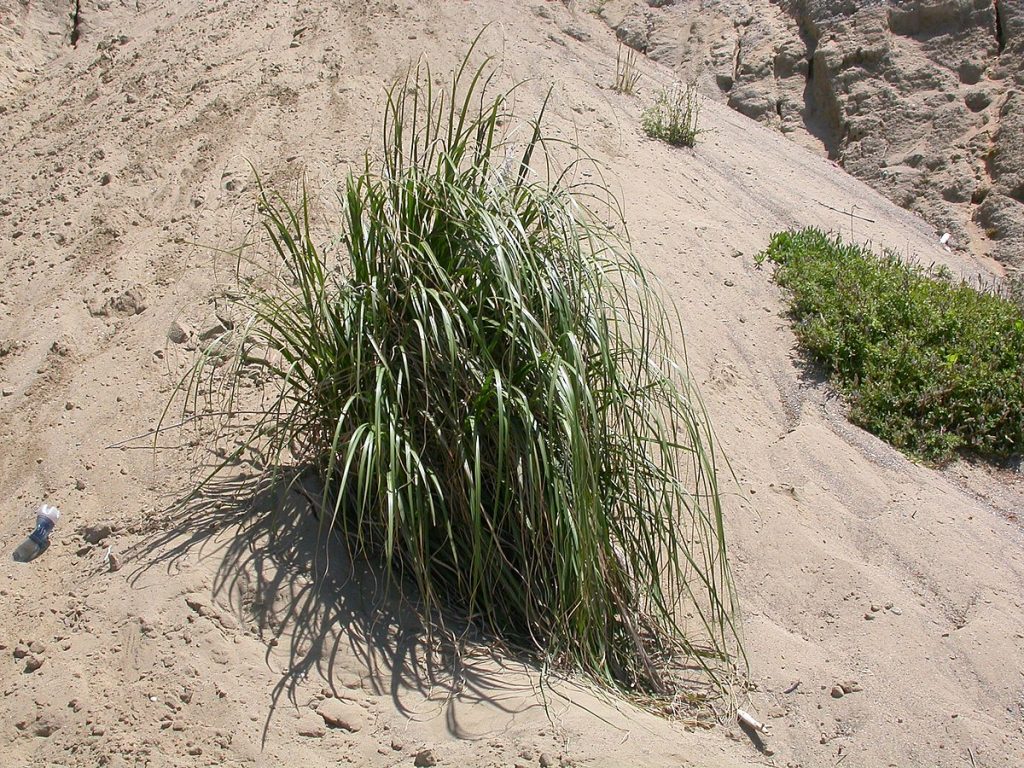
This evergreen perennial grass is native to eastern Oregon, California, and northern Mexico, where it grows in coastal sage scrub, chaparral, southern oak woodland, foothill woodland, and Joshua tree woodlands. It is a member of the grass family, Poaceae, that also includes rice, corn and bamboo. The plants grow in clumps or bunches with sword-shaped, gray-green leaves that are 3-4′ in length and flowering stalks that are 8′ or more. Dense clusters of spikelets up to 17″ long and composed of 1-7 small, light green flowers appear in the summer and give way light brown seed pods. The seeds are attractive to birds and small mammals while the leaves provide larval food for several moths. Giant wild rye is very drought tolerant so a good choice for xeriscaping but is probably too large for most gardens. The cultivar ‘Canyon Prince’, although usually seedless, might be more suitable and would be useful in seaside, desert, and rock gardens. The genus name, Elymus, is from Ancient Greek ἔλυμος (élumos), and means millet. The specific epithet, condensatus, comes from the Latin, con, meaning with and densus, meaning dense, compact, probably referring to the compact dense spike.
Type: Evergreen perennial grass
Bloom: Dense spikes of small, light green flowers in summer
Size: 3-6′ H x 3-8′ W
Light: Full sun; tolerates part shade
Soil: Sandy, dry, well-drained
Hardiness: Zones 6-10
Care: Low maintenance but probably too large for most home gardens
Pests and Diseases: None of significance
Propagation: Seed, division of clumps
Companion Plants: Hummingbird sage, bush sunflower, coyote brush,
Outstanding Selections:
‘Canyon Prince’ (blue-green foliage; smaller [2-3′ H x3′ W] and more compact than the species)
‘Gaviota Gray’ (larger than ‘Canyon Prince’)
‘Lottie’s Choice’ (larger than ‘Canyon Prince’)
Photo Credit: Matt Lavin Wikimedia Commons